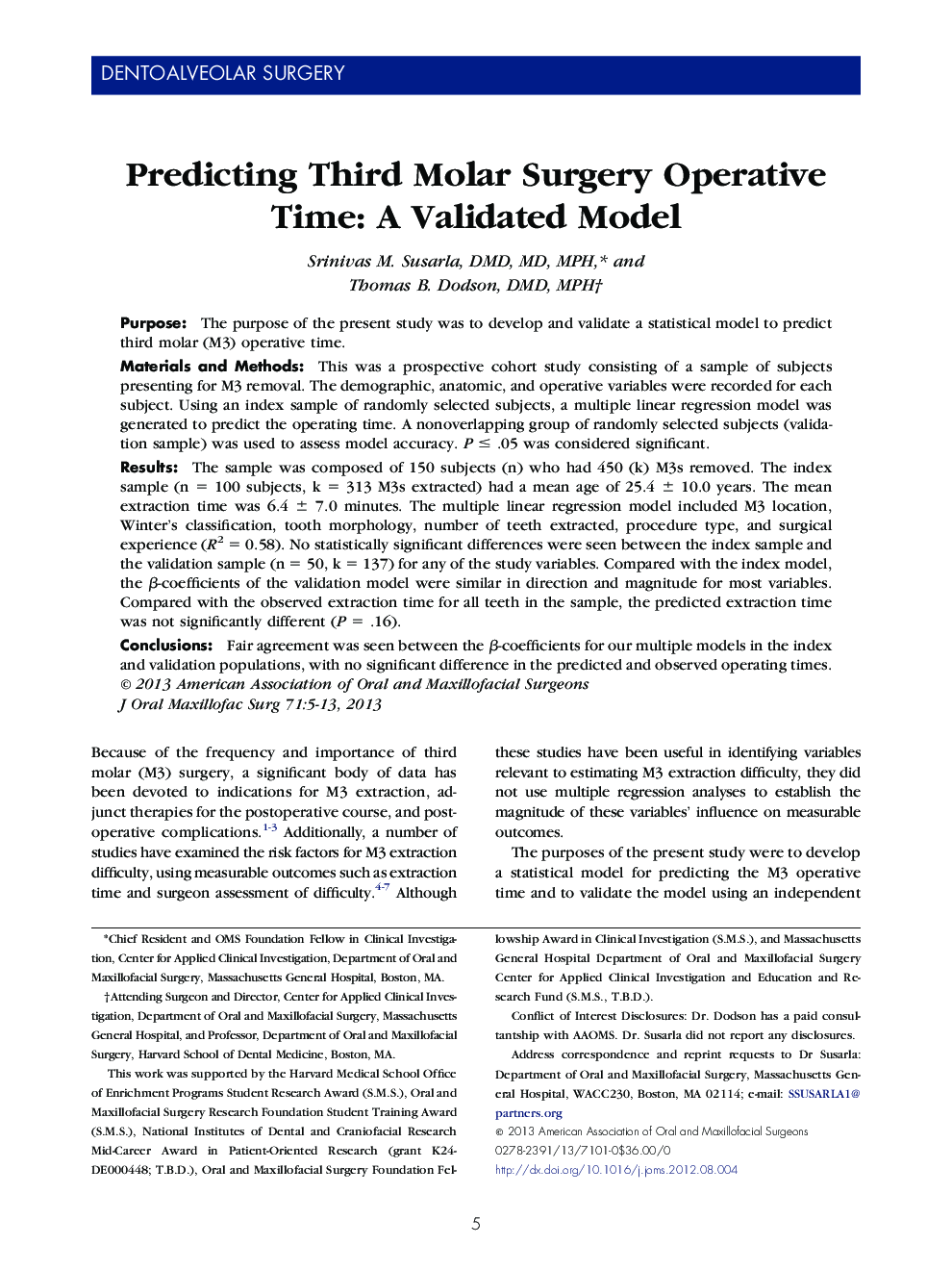| Article ID | Journal | Published Year | Pages | File Type |
|---|---|---|---|---|
| 3158001 | Journal of Oral and Maxillofacial Surgery | 2013 | 9 Pages |
PurposeThe purpose of the present study was to develop and validate a statistical model to predict third molar (M3) operative time.Materials and MethodsThis was a prospective cohort study consisting of a sample of subjects presenting for M3 removal. The demographic, anatomic, and operative variables were recorded for each subject. Using an index sample of randomly selected subjects, a multiple linear regression model was generated to predict the operating time. A nonoverlapping group of randomly selected subjects (validation sample) was used to assess model accuracy. P ≤ .05 was considered significant.ResultsThe sample was composed of 150 subjects (n) who had 450 (k) M3s removed. The index sample (n = 100 subjects, k = 313 M3s extracted) had a mean age of 25.4 ± 10.0 years. The mean extraction time was 6.4 ± 7.0 minutes. The multiple linear regression model included M3 location, Winter's classification, tooth morphology, number of teeth extracted, procedure type, and surgical experience (R2 = 0.58). No statistically significant differences were seen between the index sample and the validation sample (n = 50, k = 137) for any of the study variables. Compared with the index model, the β-coefficients of the validation model were similar in direction and magnitude for most variables. Compared with the observed extraction time for all teeth in the sample, the predicted extraction time was not significantly different (P = .16).ConclusionsFair agreement was seen between the β-coefficients for our multiple models in the index and validation populations, with no significant difference in the predicted and observed operating times.
